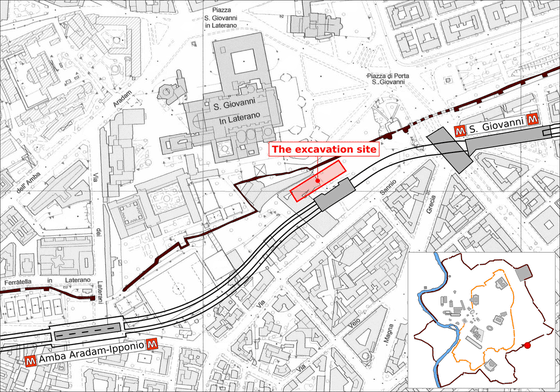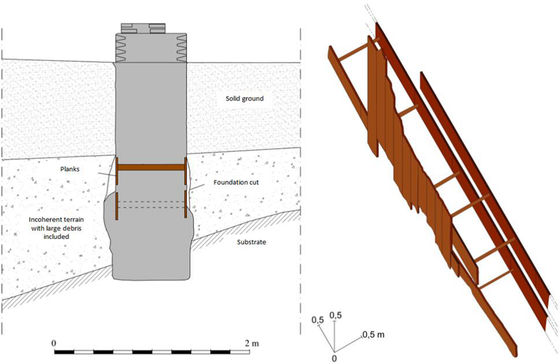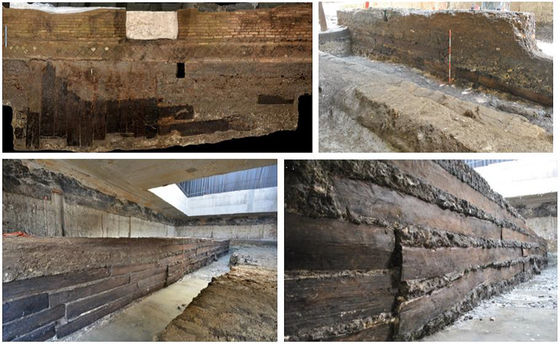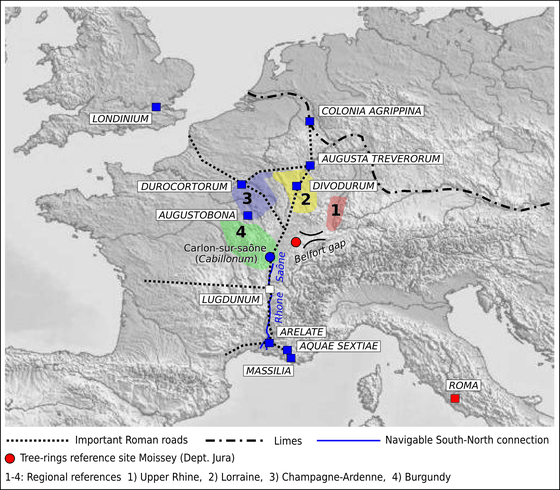It turned out that long-distance transportation of wood was carried out from a place more than 1700 km away as of about 2000 years ago

by
In the ' Roman Empire ' that existed in ancient Rome, the latest research has revealed that the wood used for construction was transported from a long distance far beyond imagination.
Dendrochronological evidence for long-distance timber trading in the Roman Empire
https://journals.plos.org/plosone/article?id=10.1371/journal.pone.0224077
Long-distance timber trade underpinned the Roman Empire's construction-The Archeology News Network
https://archaeologynewsnetwork.blogspot.com/2019/12/long-distance-timber-trade-underpinned.html
Mauro Bernabée, a researcher working at the National Research Council in Italy, published a paper on PLOS ONE , an open access peer-reviewed scientific journal, revealing that wood was transported over long distances during the Roman Empire It has become.
There are many kinds of timber used in ancient Roman buildings and ships. It is thought that timber was collected from various places around the Roman Empire and used as fuel for construction and shipbuilding. Bernabay et al.'S research team investigated 24 very well preserved oak materials that were considered to be ancient Roman timber. The surveyed oak wood was excavated during the construction of the subway in Rome from 2014 to 2016.
The red frame in the map below is where the oak was surveyed.

The oak used in the study is presumed to be part of a colonnade in the mansion garden that once existed on

The following is a photograph of a part of a colonnade excavated from the ground.

Berna Bay succeeded in dating 13 out of 24 by measuring the annual ring width of each oak and predicting the approximate age by conducting statistical tests. Furthermore, by comparing the dating results with the reference ages of oak in the Mediterranean and Central Europe, we analyzed where the surveyed oak was cut and found that it was more than 1700 km away from
From the size of the oak used in the colonnades and the transport distance of 1,700 km, Bernabay said, “Ancient Roman (or a merchant who traded with the ancient Romans) floated wood on the water, I guess we transported timber from the Saône and Rhone rivers through the Mediterranean Sea and up the Tiber to Rome.
The following red circle is the point where oak is estimated to have been cut down. From there, it is believed that they traveled down the Saône and Rhone rivers in the blue line to the Mediterranean and transported timber to Rome.

Berna Bay speculated that the logistics organization in ancient Rome was of a considerable level due to the difficulty of obtaining oak planks. Furthermore, the fact that long-distance transportation of 1700 km was carried out suggests that trade was carried out frequently in various regions during the Roman period.
Bernabay said, “This study shows that during ancient Roman times, timber was transported for construction purposes from the natural forest area in northeastern France to the center of Rome. From the many obstacles that can occur, we can see that the ancient Romans and their societies had a powerful transport organization, and that timber was very important to ancient Rome. '' It is written.

by zhao chen
Related Posts:
in Science, Posted by logu_ii







